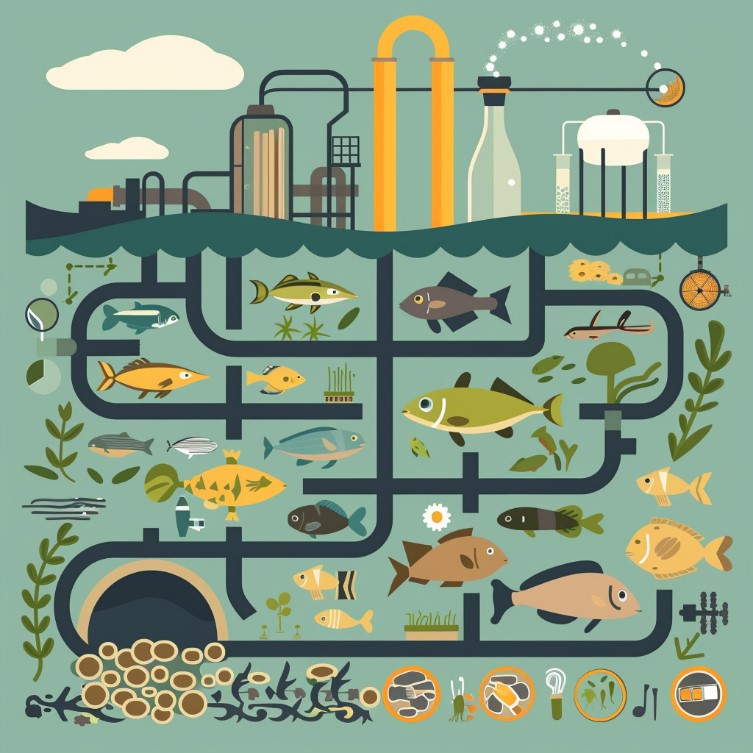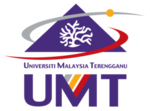AQUACULTURE WASTES AS A RESOURCE: AN OVERVIEW
Keywords:
Aquaculture Waste, Circular Economy, Biofertilizers, Bioremediation, Sustainable DevelopmentAbstract
Aquaculture, a rapidly growing sector, produces substantial amounts of organic and inorganic waste, which, if not managed properly, can lead to environmental degradation. This review explores the potential of aquaculture wastes as valuable resources within a circular economy framework. The study focuses on various types of wastes, including fish feces, uneaten feed, and mortalities, and their potential applications in agriculture, energy production, and bioremediation. The current methods of waste management and their limitations, highlighting innovative approaches for converting these wastes into biofertilizers, biogas, and other bio-based products are analyzed. Emphasis is placed on the role of microbial processes and biotechnological advancements in enhancing waste valorization. Case studies demonstrating successful implementation of waste-to-resource strategies in different aquaculture systems are reviewed, providing practical insights and best practices. The paper also discusses policy implications and the need for integrated waste management strategies that align with sustainable development goals. By transforming aquaculture wastes into valuable resources, the industry can mitigate its environmental footprint while contributing to global food security and sustainable development. This review aims to offer an overview of the current state of research and to identify future directions for maximizing the potential of aquaculture wastes within a sustainable and resilient aquaculture system.
References
Angelidaki, I., & Sanders, W. (2004). Assessment of the anaerobic biodegradability of macropollutants. Reviews in Environmental Science and Bio/Technology, 3(2), 117-129. https://doi.org/10.1007/s11157-004-2502-3
Avnimelech, Y. (2009). Biofloc technology: A practical guide book. Baton Rouge, LA: World Aquaculture Society.
Batstone, D. J., Tait, S., & Starrenburg, D. (2009). Estimation of hydrolysis parameters in full-scale anaerobic digesters. Biotechnology and Bioengineering, 102(5), 1513-1520. https://doi.org/10.1002/bit.22163
Bharagava, R.N. ed., 2020. Bioremediation of industrial waste for environmental safety (Vol. 1). Singapore. Springer. https://doi.org/10.1007/978-981-13-3426-9
Bücker, F., Marder, M., Peiter, M. R., Lehn, D. N., Esquerdo, V. M., de Almeida Pinto, L. A., & Konrad, O. (2020). Fish waste: An efficient alternative to biogas and methane production in an anaerobic mono-digestion system. Renewable Energy, 147, 798-805. https://doi.org/10.1016/j.renene.2019.08.140
Chávez-Crooker, P., & Obreque-Contreras, J. (2010). Bioremediation of aquaculture wastes. Current opinion in Biotechnology, 21(3), 313-317. https://doi.org/10.1016/j.copbio.2010.04.001
Chen, Y., Wen, Y., Zhou, Q., & Vymazal, J. (2014). Effects of plant biomass on denitrifying genes in subsurface-flow constructed wetlands. Bioresource Technology, 157, 341-345. https://doi.org/10.1016/j.biortech.2014.01.137
Chiquito-Contreras, R. G., Hernandez-Adame, L., Alvarado-Castillo, G., Martínez-Hernández, M. D. J., Sánchez-Viveros, G., Chiquito-Contreras, C. J., & Hernandez-Montiel, L. G. (2022). Aquaculture—Production System and Waste Management for Agriculture Fertilization—A Review. Sustainability, 14(12), 7257. https://doi.org/10.3390/su14127257
Chopin, T. (2010). Integrated multi-trophic aquaculture in Advancing the Aquaculture Agenda: Workshop Proceedings, OECD Publishing, Paris, https://doi.org/10.1787/9789264088726-15-en
Choudhury, A., Lepine, C., Witarsa, F., & Good, C. (2022). Anaerobic digestion challenges and resource recovery opportunities from land-based aquaculture waste and seafood processing byproducts: A review. Bioresource Technology, 354, 127144. https://doi.org/10.1016/j.biortech.2022.127144
D'Abramo, L. R. (2021). Sustainable aquafeed and aquaculture production systems as impacted by challenges of global food security and climate change. Journal of the World Aquaculture Society, 52(6), 1162-1167. https://doi.org/10.1111/jwas.12867
Drizo, A., & Shaikh, M. O. (2023). An assessment of approaches and techniques for estimating water pollution releases from aquaculture production facilities. Marine Pollution Bulletin, 196, 115661. https://doi.org/10.1016/j.marpolbul.2023.115661
FAO. (2022). The state of world fisheries and aquaculture 2022. Food and Agriculture Organization of the United Nations. Retrieved from http://www.fao.org/documents/card/en/c/cb4333en
Hieu, T. T., Van Tung, T., Thao, N. T. P., Thu, N. H. A., Thang, N. V., Kien, T. T., & Bui, X. T. (2021). Material flow analysis in an integrated catfish farming system in Mekong Delta, Vietnam: A case study. Case Studies in Chemical and Environmental Engineering, 4, 100154. https://doi.org/10.1016/j.cscee.2021.100154
Illera-Vives, M., Labandeira, S. S., Brito, L. M., López-Fabal, A., & López-Mosquera, M. E. (2015). Evaluation of compost from seaweed and fish waste as a fertilizer for horticultural use. Scientia Horticulturae, 186, 101-107.
Lin, Y. F., Jing, S. R., Lee, D. Y., & Wang, T. W. (2002). Nutrient removal from aquaculture wastewater using a constructed wetlands system. Aquaculture, 209(1-4), 169-184. https://doi.org/10.1016/S0044-8486(01)00801-8
Liu, X., Xu, H., Wang, X., Wu, Z., & Bao, X. (2014). An ecological engineering pond aquaculture recirculating system for effluent purification and water quality control. Clean–Soil, Air, Water, 42(3), 221-228. https://doi.org/10.1002/clen.201200567
Lopes, I. G., Braos, L. B., Cruz, M. C. P., & Vidotti, R. M. (2021). Valorization of animal waste from aquaculture through composting: Nutrient recovery and nitrogen mineralization. Aquaculture, 531, 735859. https://doi.org/10.1016/j.aquaculture.2020.735859
Lukwambe, B., Zhao, L., Nicholaus, R., Yang, W., Zhu, J., & Zheng, Z. (2019). Bacterioplankton community in response to biological filters (clam, biofilm, and macrophytes) in an integrated aquaculture wastewater bioremediation system. Environmental Pollution, 254, 113035. https://doi.org/10.1016/j.envpol.2019.113035
Mahish, P. K., Verma, D. K., Ghritlahare, A., Arora, C., & Otero, P. (2024). Microbial bioconversion of food waste to bio-fertilizers. Sustainable Food Technology, 2(3), 689-708. https://doi.org/10.1039/D3FB00041A
Mata-Alvarez, J., Macé, S., & Llabrés, P. (2014). Anaerobic digestion of organic solid wastes. An overview of research achievements and perspectives. Bioresource Technology, 74(1), 3-16. https://doi.org/10.1016/S0960-8524(00)00023-7
Ndiaye, N. A., Maiguizo-Diagne, H., Diadhiou, H. D., Ndiaye, W. N., Diedhiou, F., Cournac, L., Gaye, M. L., Fall, S., & Brehmer, P. (2020). Methanogenic and fertilizing potential of aquaculture waste: towards freshwater farms energy self‐sufficiency in the framework of blue growth. Reviews in Aquaculture, 12(3), 1435-1444. https://doi.org/10.1111/raq.12390
Samoraj, M., Mironiuk, M., Izydorczyk, G., Witek-Krowiak, A., Szopa, D., Moustakas, K., & Chojnacka, K. (2022). The challenges and perspectives for anaerobic digestion of animal waste and fertilizer application of the digestate. Chemosphere, 295, 133799.
Sarker, S. (2020). By-products of fish-oil refinery as potential substrates for biogas production in Norway: A preliminary study. Results in Engineering, 6, 100137. https://doi.org/10.1016/j.rineng.2020.100137
Tacon, A. G. J., & Metian, M. (2015). Global overview on the use of fish meal and fish oil in industrially compounded aquafeeds: Trends and future prospects. Aquaculture, 285(1-4), 146-158. https://doi.org/10.1016/j.aquaculture.2008.08.015
Troell, M., Halling, C., Neori, A., Chopin, T., Buschmann, A. H., Kautsky, N., & Yarish, C. (2014). Integrated mariculture: Asking the right questions. Aquaculture, 226(1-4), 69-90. https://doi.org/10.1016/S0044-8486(03)00469-1
Troell, M., Joyce, A., Chopin, T., Neori, A., Buschmann, A. H., & Fang, J. G. (2009). Ecological engineering in aquaculture: Potential for integrated multi-trophic aquaculture (IMTA) in marine offshore systems. Aquaculture, 297(1-4), 1-9. https://doi.org/10.1016/j.aquaculture.2009.09.010
Vymazal, J. (2011). Constructed wetlands for wastewater treatment: Five decades of experience. Environmental Science & Technology, 45(1), 61-69. https://doi.org/10.1021/es101403q
Wang, L. K., Wang, M. H. S., Cardenas, R. R., Sabiani, N. H. M., Yusoff, M. S., Hassan, S. H., ... & Hung, Y. T. (2021). Composting processes for disposal of municipal and agricultural solid wastes. Solid Waste Engineering and Management: Volume 1, 399-523. https://doi.org/10.1007/978-3-030-84180-5_7

Published
How to Cite
Issue
Section
License
Copyright (c) 2024 Planetary Sustainability

This work is licensed under a Creative Commons Attribution-ShareAlike 4.0 International License.




